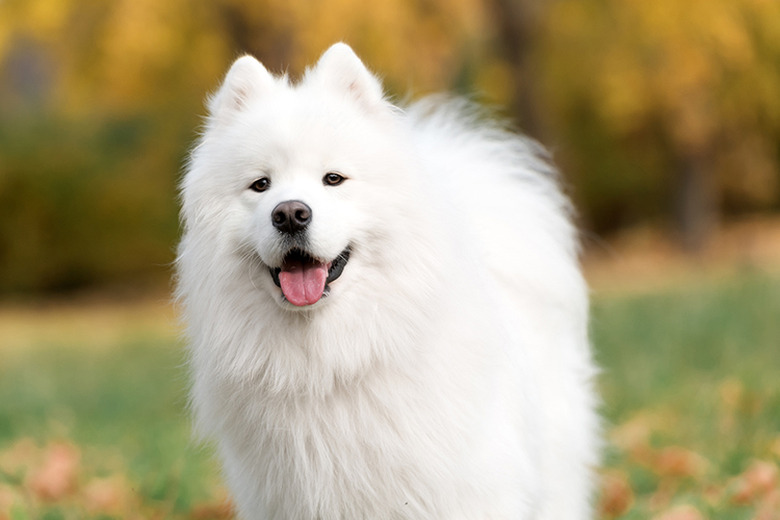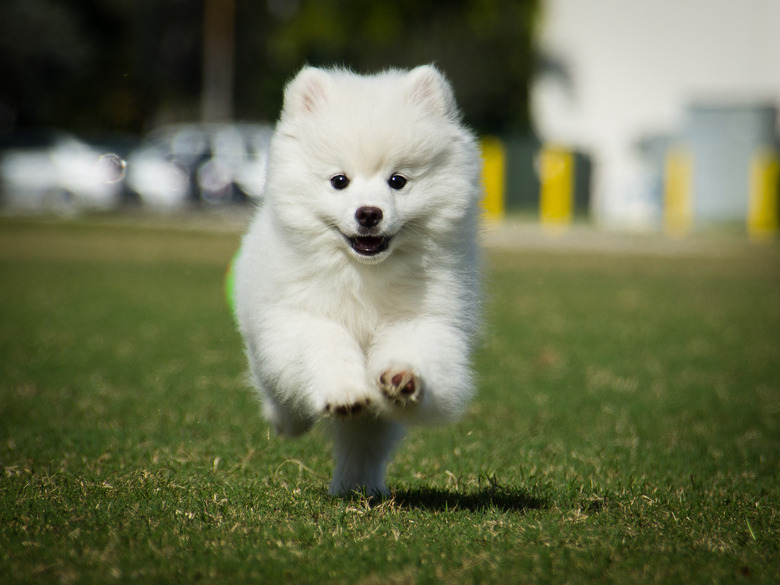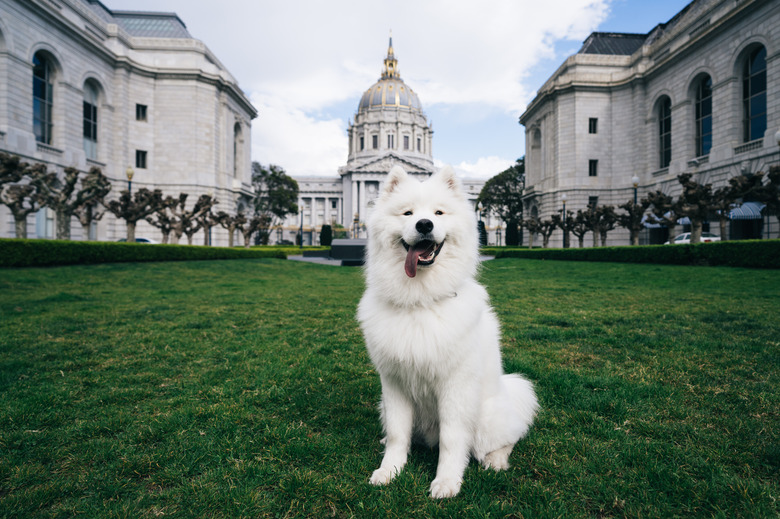Common Health Problems With American Eskimo Dogs
The American Eskimo dog is a sturdy breed related to German spitz dogs. These pooches are also commonly referred to as "Eskies," an abbreviated version of their name. In terms of size, American Eskimo dogs exist in three groups, which are toy, miniature, and standard. The standard American Eskimo is the largest size and weighs 25 to 30 pounds. The miniature American Eskimo weighs 10 to 20 pounds and the toy American Eskimo weighs 6 to 10 pounds. As with most doggie breeds, some health issues affect individuals of this breed more commonly than others.
Luxating patella problems
Luxating patella problems
One medical condition that occasionally affects American Eskimo dogs is patellar luxation. This applies to all of the size groups: the standard, miniature, and toy American Eskimo dog. Patellar luxation describes issues with the exact location of a canine's kneecap. When dogs have luxating patellas, their kneecaps essentially spring out of the appropriate spot.
Patellar luxation is prevalent in wee and big dogs alike. If you observe anything unusual in your American Eskimo's back legs, set up a veterinarian appointment immediately, the sooner the better. You also might notice your pet making conspicuous hopping motions as he tries to move around. Orthopedic difficulties of the back legs in general are somewhat common in American Eskimo dogs, so pay attention to any signs of them.
Progressive retinal atrophy
Progressive retinal atrophy
Eye issues such as progressive retinal atrophy also can affect these nimble doggies. The genetic retinal ailment progresses gradually, and with time causes blindness. If a dog has progressive retinal atrophy, either his retina ceased normal growth at too early of a stage, or his photoreceptors deteriorated at an abnormally quick pace.
Progressive retinal atrophy isn't only common in the American Eskimo breed, but also in many others such as toy poodles, Australian cattle dogs, Siberian huskies, and Irish setters. Good breeders screen their dogs for this condition with a DNA test for progressive retinal atrophy. If you are concerned that your precious pooch might be experiencing eyesight problems, take him to the vet immediately.
Hip dysplasia in American Eskimo dogs
Hip dysplasia in American Eskimo dogs
Hip dysplasia is another orthopedic concern that American Eskimo dogs sometimes experience. A hip examination is one of the health tests that responsible breeders should have done.
Hip dysplasia, in a nutshell, is a genetic ailment that is characterized by a hip joint that simply developed in an abnormal fashion. This leads to looseness of the joint and ultimately excessive motion of the bone in the legs. Some key symptoms of hip dysplasia in pooches are rigidness, hobbling, and reluctance to partake in physical exercise or walk on stairs. If you have any reason to suspect that your precious pet might be dealing with this painful issue, bring him to the vet as soon as possible.
Diabetes in Alaskan Eskimo dogs
Diabetes in Alaskan Eskimo dogs
Diabetes also sometimes affects American Eskimo dogs. If a dog has diabetes, then his body either doesn't make sufficient insulin or doesn't react correctly to the hormone. Be alert to signs of diabetes in canines, such as excessive urination, hazy eyes, weight loss, throwing up, exhaustion, increased hunger, dehydration, and inordinate thirst. Veterinary assistance is a must for any dog who has diabetes, so don't wait around.
Robust dogs in general
Robust dogs in general
Despite these possible medical issues, American Eskimo dogs are, on the whole, fairly robust and tough dogs. With the right care, exercise and diet, they can live happily for anywhere between 13 and 15 years. Routine appointments with the veterinarian are a must, even if your pet seems to be in 100 percent glowing condition.


